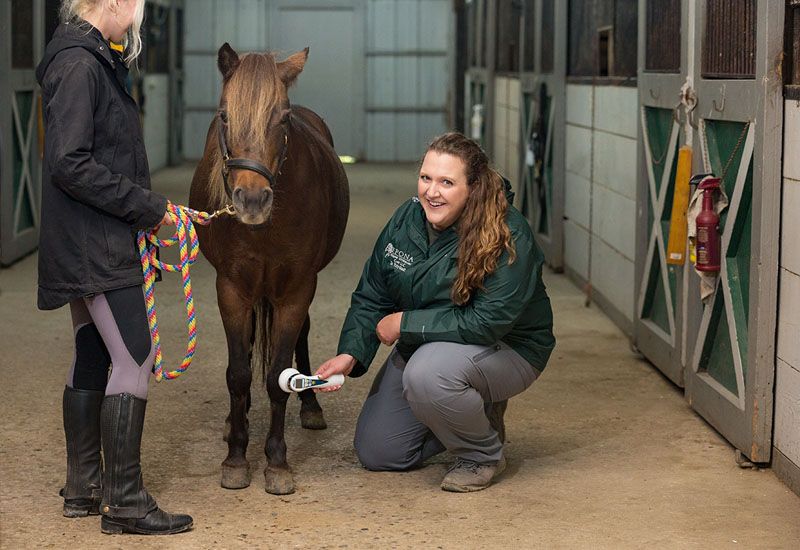Why Equine Therapy is Becoming a Preferred Choice for Emotional Wellness
Why Equine Therapy is Becoming a Preferred Choice for Emotional Wellness
Blog Article
Just How Laser Therapy in Equine Therapy Is Transforming Veterinary Take Care Of Equines
Laser therapy has actually emerged as a transformative approach in equine veterinary treatment, giving a non-invasive solution that speeds up recovery and enhances overall wellness. Leveraging accurate light wavelengths, this innovative treatment stimulates cellular regeneration, lowers swelling, and minimizes pain. Its efficiency expands from musculoskeletal injuries to chronic ailments like osteo arthritis, significantly boosting mobility and life quality for equines. The transportability and convenience of laser treatment gadgets even more emphasize their expanding necessity amongst vets. As we discover the detailed mechanics and real-world successes, the extensive effect on equine clinical practices comes to be significantly evident.
Comprehending Laser Therapy

The technology behind laser therapy is based in the concept of photochemistry, where photons are absorbed by chromophores within cells, resulting in boosted ATP manufacturing and modulation of reactive oxygen species (Equine Therapy). This, in turn, advertises mobile proliferation, lowers inflammation, and speeds up recovery. Veterinary professionals utilize different types of lasers, consisting of low-level lasers (LLLT) and high-power Course IV lasers, relying on the certain healing goals and the nature of the equine condition being dealt with
Various laser wavelengths and power settings are very carefully selected to target different cells depths and achieve wanted scientific outcomes. Safety and security protocols are paramount, as improper use can bring about thermal damages or suboptimal healing effects. Therefore, a thorough understanding of laser therapy's mechanisms and applications is important for its efficient execution in equine veterinary method.
Benefits for Equine Wellness
The myriad advantages of laser therapy for equine wellness incorporate improved recovery, discomfort decrease, and improved movement. This innovative therapy method leverages details wavelengths of light to penetrate cells, boosting cellular function and advertising rapid cells repair service. The non-invasive nature of laser therapy ensures very little stress and discomfort for the horse, promoting a smoother healing process.
Boosted recovery is one of the primary benefits, as laser treatment speeds up mobile regrowth and collagen synthesis. Pain decrease is accomplished with the anti-inflammatory effects of laser therapy, which decreases swelling and lowers the manufacturing of pain-inducing chemicals.
Enhanced flexibility is one more critical benefit, especially for performance and working equines. By lowering inflammation and discomfort, and enhancing tissue repair, laser treatment helps in restoring joint feature and muscle flexibility. The collective result of these advantages is not only a quicker go back to typical task however additionally a general enhancement in the steed's high quality of life. Thus, laser treatment stands as a transformative device in modern-day horse vet care.
Common Conditions Dealt With
Laser therapy has emerged as a versatile top article therapy option for a range of usual equine problems. Additionally, laser therapy is efficient for Discover More Here conditions like osteoarthritis, where it assists alleviate joint swelling and advertise tissue fixing.
Wound monitoring is an additional area where laser therapy has actually shown substantial pledge. Chronic wounds or slow-healing abscess can be especially tough in steeds, however laser treatment improves cellular regrowth and boosts blood circulation, thus quickening the recovery process. Additionally, laser treatments have actually been effectively used in handling hoof problems such as laminitis and abscesses, alleviating pain and promoting quicker healing.

Technology Behind Laser Treatment
Past the myriad problems treatable with laser therapy, the technology itself merits closer assessment. At the heart of laser therapy is using specific wavelengths of light to pass through tissues and evoke organic responses. These wavelengths, normally ranging from 600 to 1000 nanometers, are selectively taken in by chromophores in the skin, muscle mass, and other tissues, initiating a cascade of mobile occasions.
Laser gadgets utilized in veterinary medicine commonly utilize low-level laser therapy (LLLT) or cold laser treatment. Unlike high-powered medical lasers, these tools operate at reduced energy degrees, enhancing therapeutic advantages while reducing thermal damage. The power from the laser light boosts adenosine triphosphate (ATP) production, boosts mobile metabolic rate, and increases cells fixing processes.

Success Stories and Situation Researches

Showcasing the concrete advantages of laser treatment, many success tales and study brighten its transformative effect on equine wellness. One such situation includes a pureblooded racehorse struggling with persistent important source tendonitis. Traditional treatments yielded marginal improvement, but after integrating laser therapy into the program, the horse exhibited considerable decreases in inflammation and discomfort within weeks, ultimately going back to affordable auto racing.
Another compelling example features a dressage steed identified with serious neck and back pain, limiting its efficiency. A vet team utilized low-level laser therapy (LLLT) to target the inflamed areas, causing significant renovation in adaptability and a notable decrease in pain. Over a number of sessions, the equine restored its peak kind, showcasing the efficiency of laser treatment in dealing with bone and joint issues.
In addition, a research performed at a leading equine facility examined 50 steeds with various soft cells injuries treated with laser therapy. The outcomes stood out: 85% of the horses showed accelerated healing times and improved wheelchair. These situations emphasize the flexibility and efficiency of laser treatment in equine medicine, providing a non-invasive, scientifically-backed approach to improving healing and efficiency in equines.
Final Thought
Laser therapy is revolutionizing equine vet care by supplying a non-invasive treatment that accelerates healing, minimizes inflammation, and eases pain. With its efficiency in treating a series of conditions, from musculoskeletal injuries to persistent conditions like osteoarthritis, this innovation dramatically enhances equine health and wellness and wheelchair. The transportability and versatility of laser treatment even more highlight its transformative effect on vet practices, strengthening its role as an important device in modern-day equine health care.
Report this page